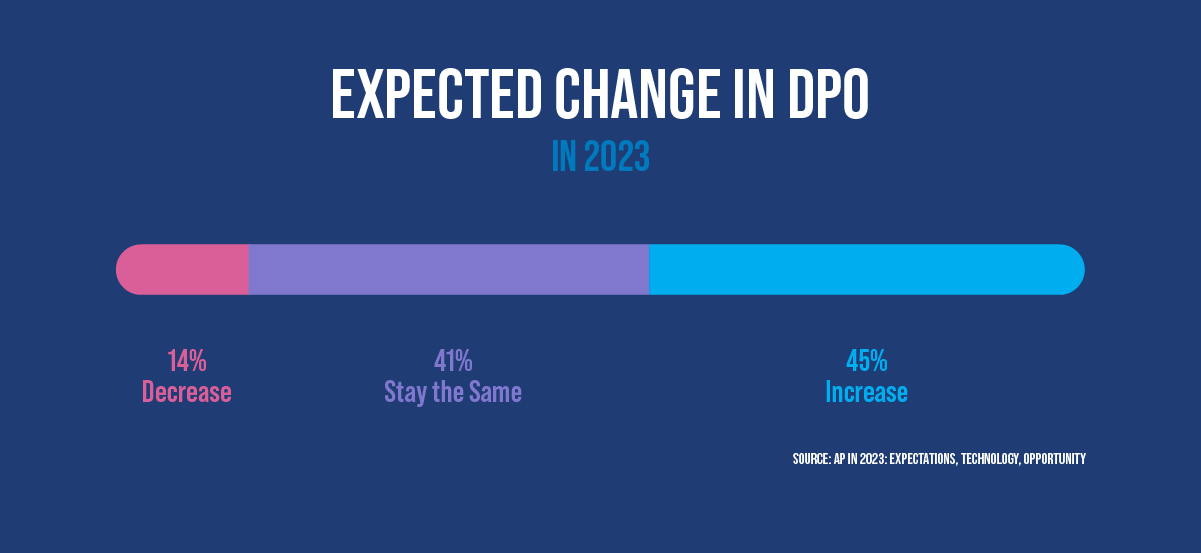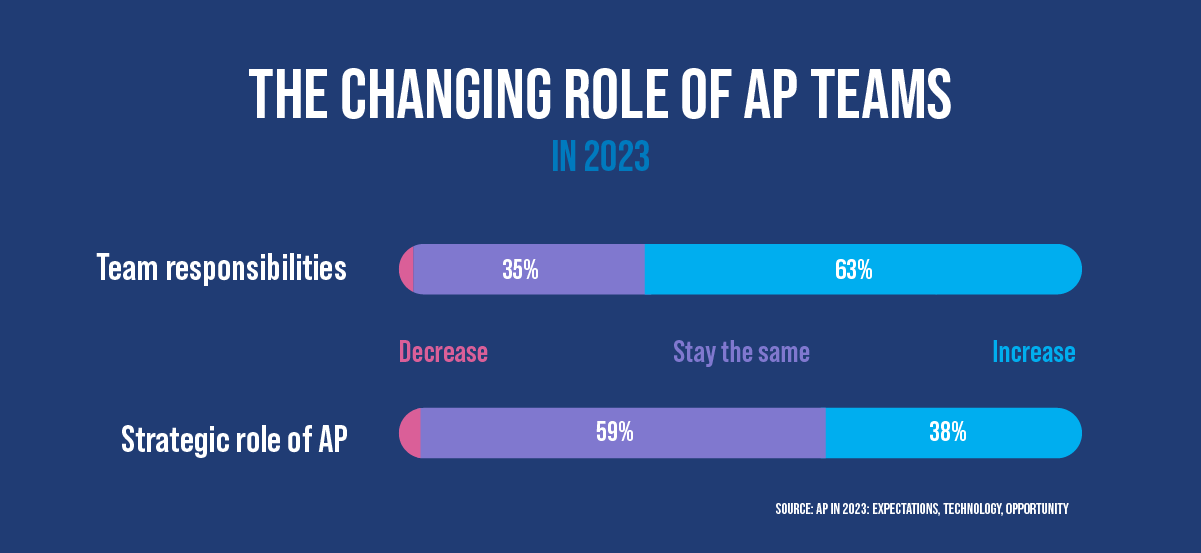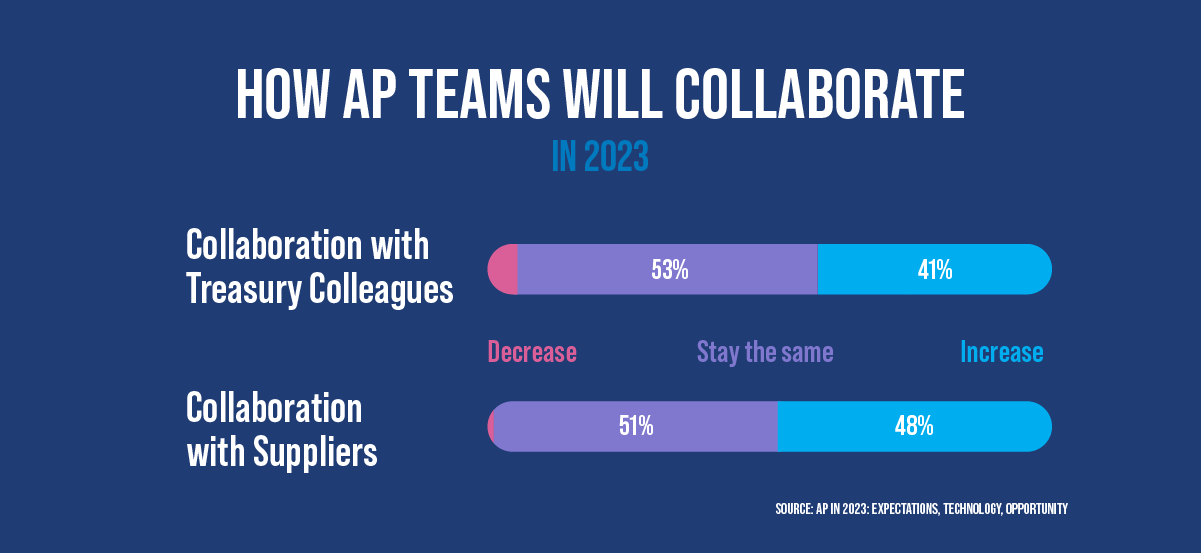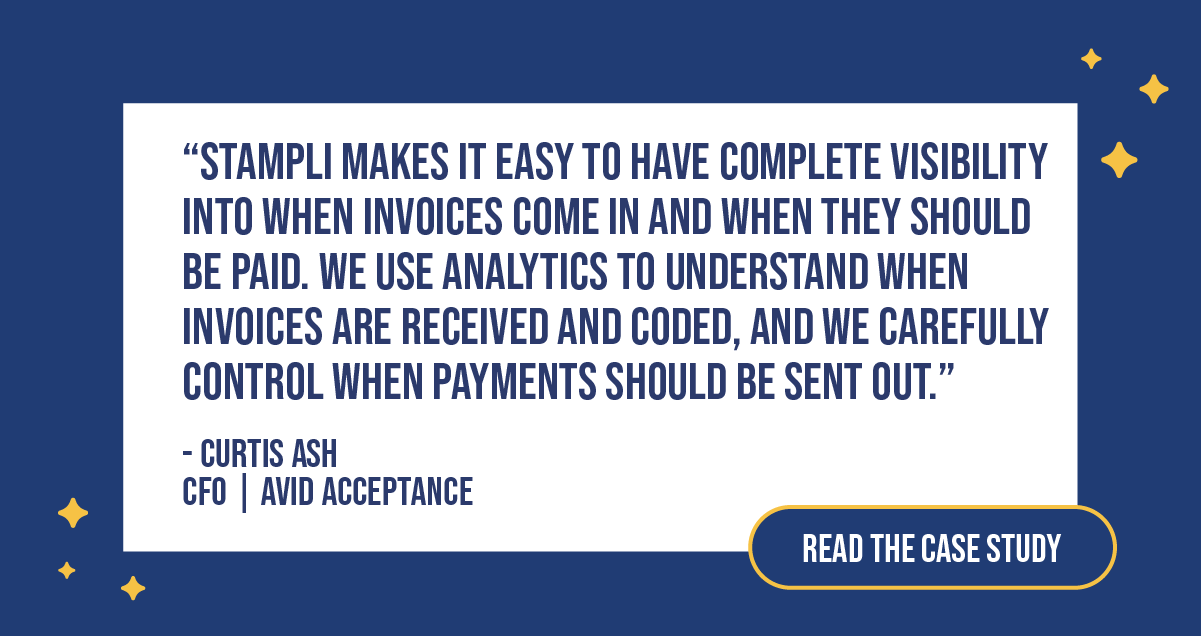Six Strategies to Better Accounts Payable Management

Strategic accounts payable management is all about optimizing working capital.
For many CFOs this means extending payables as long as possible to ensure maximal cash flow. However, this short-term strategy can often backfire. Withholding payments can damage supplier relationships. As a result, suppliers may slow delivery times, be less willing to respond to queries or concerns, and insist on more stringent payment terms.
On the other hand, when you pay invoices on time it often yields benefits such as early payment discounts. It also builds stronger supplier relationships – an asset in light of global supply chain insecurity.
To identify and realize these benefits, you must take a strategic approach to managing accounts payable. By taking leadership in building a working capital culture that emphasizes the importance of optimizing accounts payable, you can free up working capital to invest in growing your business.
Read on to explore the benefits of strategic accounts payable management, six management strategies to build a working capital culture, and how accounts payable automation can help you manage AP more effectively.
Let’s dive in and look at the goals of AP management.
What is strategic accounts payable management?
Accounts payable management is a balancing act between paying suppliers and maintaining healthy cash flow. If your accounts payable balance increases over time, it means you’re buying more products and services on credit rather than paying cash. If your AP decreases, it means you’re paying your past obligations to suppliers faster than you’re buying new products and services on credit.

You can manage this balance by adjusting when and how you pay suppliers. For example, if you want to increase your cash reserves, you can take longer to pay your outstanding accounts in AP. As we mentioned, delaying payments isn’t an ideal solution because it can damage vendor relationships. It’s better to take a more strategic approach to managing working capital.
Goals of strategic accounts payable management
Strategic accounts payable management involves optimizing AP processes to improve your ability to manage cash flow and ensure sufficient working capital.
An effective AP strategy has five goals:
- Ensure timely payments: Pay vendors by their due dates to avoid late fees and maintain positive vendor relationships.
- Accurate financial reporting: Ensure that vendor invoice data is captured and validated and that invoices have been approved for payment before processing.
- Governance and compliance: Ensure all processes and payments comply with legal and regulatory requirements to avoid fines and penalties.
- Cost reduction: Reduce the cost of invoice processing and payment workflows while maintaining efficiency.
- Improved processing efficiency: Streamline the procurement-to-pay workflow to reduce manual tasks, prevent errors, and improve processing times.
By achieving these goals, you gain greater visibility and control over AP processes and data – and the ability to make and execute informed decisions to manage working capital.
You can improve the accuracy of your cash flow forecasts and budgeting to anticipate and mitigate funding gaps and improve liquidity. You can save money by reducing your exposure to both fraud and costly errors, all the while streamlining manual processes. You can also leverage improved payment efficiency to negotiate preferable terms with suppliers like risk sharing, flexible payment terms, and early payment discounts.
Change isn’t always easy, but a strategic approach to your accounts payable management process can yield substantial benefits – and a healthier bottom line.
And getting started may be easier than you think.
Six strategies to improve accounts payable management
While each business is different, there are best practices you can follow to improve how you manage accounts payable. Here are six simple ways you can become more strategic about AP.
1. Simplify P2P processes
Accounts Payable is a tough job, and it’s getting tougher.
In 2022, Stampli surveyed finance leaders across the US on their expectations for accounts payable teams in the near future. 63% replied they expected the responsibilities of their AP team to increase. At the same time, just over one-third said they also expected their AP team to take on a more strategic role.

Complicated manual AP processes are a liability. They’re labor-intensive, time-consuming, and prone to errors. AP teams often find themselves running flat out trying to process invoices, obtain approvals, and get vendors paid on time. And although they are being asked to take on more strategic roles, finding the time to take on those new responsibilities can be challenging.
One of the best ways to improve accounts payable management is to simplify these processes. Begin by getting clarity on how your P2P process works and how it can be simplified. Speak to every stakeholder in the process and brainstorm ways to remove bottlenecks and improve efficiency. For example, here are some common ways to improve AP workflows:
- Let AP team members make autonomous, non-critical decisions about invoices
- Process payments in batches at regular intervals to reduce check runs and individual electronic transfers
- Automate manual data entry and invoice management processes such as invoice capture, coding, duplicate detection, and verification
- Design and implement approval processes to keep approvals on track
It can be useful to whiteboard and outline your entire P2P workflow so everyone can see how the process works end-to-end. This helps build collaboration and keep everyone on the same page.
2. Improve data and invoice accuracy
Manual invoice processing is prone to errors. AP staff can enter incorrect invoice data into your accounting software, fail to verify invoices against purchase orders and shipping receipts or pay the wrong invoice. Every error potentially costs your business money. It also reduces the quality of your transaction data and makes it harder to forecast your cash flow requirements accurately.
Identify and correct points of failure in your invoice processes to reduce errors and improve data accuracy. To start, address these typical points of failure:
- Verify invoice details against the associated purchase order and shipping receipt to ensure the invoice is accurate and you have received the goods or services
- Cross-reference pricing, discounts, and payment terms against the vendor contract to ensure they’re consistent
- Scan and digitize invoices to reduce data entry errors and share data with your ERP or accounting system
- Reconcile your bank statements to your accounts payables to ensure invoices are being paid correctly and detect duplicate payments
You can automate some of these steps, like invoice scanning, entry, and verification. Automation significantly reduces the chance of human error and allows you to verify every invoice. Also, consider setting Accounts Payable KPIs and metrics like the number of payment errors, late payments, or vendor disputes to improve the accuracy of your processes.
3. Strengthen internal controls and governance
Fraud is a significant risk to your business. Unfortunately, internal and external fraudsters often target accounts payable. Fraud is constantly evolving and can be very difficult to detect and prevent. Create and enforce strong internal controls and governance policies to minimize the risk of falling victim. Some effective internal controls include:
- Segregate critical duties such as payment batches to ensure no single employee can make financial decisions across the entire AP process
- Maintain a complete AP audit trail to capture and record transactions, employee actions, and communications
- Create and enforce approval policies to set approval limits, multiple approver rules for large purchases, and prevent unauthorized payments
- Improve access controls to ERPs, accounting systems, and other business systems to prevent unauthorized access
One of the most powerful weapons against fraud is data transparency and accuracy. Consider investing in automated AP and payment processing solutions that provide real-time visibility into your P2P processing.
4. Centralize and collaborate
Accounts payable has traditionally been a back office function. AP functions were decentralized, and AP teams rarely collaborated with other departments.
Today, the advent of ERP financial systems and integrated accounts payable systems offers clear benefits to your business. Many AP departments are looking at ways to collaborate with other departments and suppliers to realize these benefits.

Here are some ways you can implement centralization in your accounts payable department:
- Integrate AP software with ERPs and accounting systems to share data across business units, improving AP processes, visibility and ensuring everyone works from the same information
- Implement common internal controls that can be enforced through the centralized solution, ensuring all employees are subject to the same policies
- Automate approval routing to either pay the invoices in the AP system or automatically send authorized invoices for payment into your ERP
- Gain real-time end-to-end visibility of spending to improve cash flow forecasting
5. Improve vendor management
Maintaining strong vendor relationships and understanding what matters to your vendors is crucial to maintaining a healthy supply chain and growing your business. Happy vendors are more likely to invest time in building good relationships with your business – after all, when you succeed, they succeed. The many benefits of healthy vendor relationships include preferential pricing, improved responsiveness, partnership on new product development, and flexible payment terms.
Ways you can invest in building vendor relationships include:
- Pay supplier invoices on time to reduce vendors’ financial burden and make them more open to discussing early payment discounts
- Invest in a supplier portal with advanced vendor management functionality to centralize and improve communications with suppliers and allow vendors to check payment status
- Implement a vendor document management system to ensure contracts, licenses, certificates, and other documents are up to date
- See if you can get vendors to electronic payments such as Stampli Card or Stampli Direct Pay to speed up payment times and reduce errors and payment costs
Be proactive in building better vendor relationships by investing in an AP automation solution with a vendor portal. By providing your vendors with clear communication, transparency, and a seamless payment process, you can devote your time to finding ways to do better business together.
6. Go paperless
Businesses that automate their accounts payable processes gain significant advantages beyond optimizing manual paper-based processes. By removing paper from the equation, automation eliminates human error, speeds up invoice processing, and provides real-time visibility into spending.

Automation also has another key benefit. By eliminating tedious manual processes, automation frees your AP team to focus on higher-value work. You can re-assign these employees to more strategic tasks like forecasting cash flow requirements, analyzing spending trends, and improving internal controls to prevent fraud.
Here are the key areas where an investment in automation will pay big dividends:
- Cost savings: automation reduces the cost per invoice by making your AP team more efficient
- Faster vendor payments: streamlining invoice processing, approval, and payments processes lets you reduce DPO and pay vendors on time
- Better vendor management: keep vendors informed and in the loop by centralizing communications with a vendor portal
- Payment flexibility: automated payment solutions let you take advantage of faster and more affordable electronic payment methods like ACH transfers
Stampli: A strategic investment in accounts payable management
Accounts payable done right delivers success.
Expectations for AP teams are on the rise. You need the resources to deliver results and earn your seat at the strategy table.
Invest in the right technology and technology partner for effective accounts payable management. Look for a partner who will support you pre and post- implementation and offer insights into how your company might most successfully make the most out of your AP automation solution.
Stampli is the only purpose-built AI-powered AP automation solution. It centers all communication, documentation, and workflows on top of each invoice, eliminating the need for workarounds, external communications channels, 3rd-party implementation partners, or manual AP work inside the ERP.
Reduce tedious manual tasks with the help of Billy the Bot™, Stampli’s smart AI-powered automation. Billy quickly learns how your business accounts payable processes work to automate your most time-consuming activities, including invoice capture, coding, approvals, fraud detection, and automatic sync of invoice data to your ERP system.
Stampli supports all native functionality for over 70 ERPs, including those from Sage, Microsoft, SAP, Oracle, QuickBooks, and others, enabling it to deploy in a matter of weeks, not months.
Get strategic about AP management today! Contact Stampli for a free demo.

